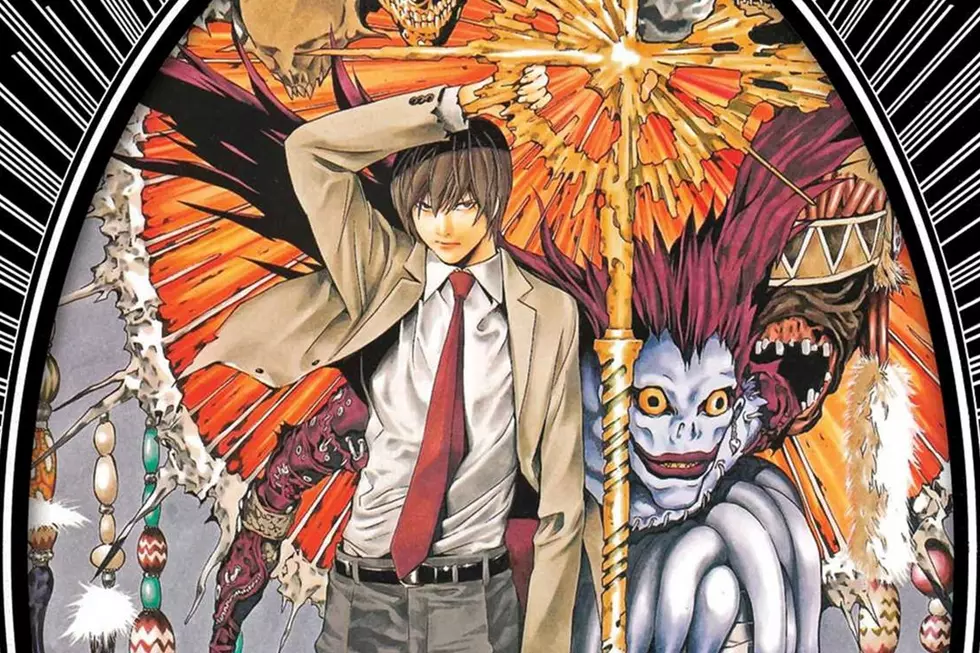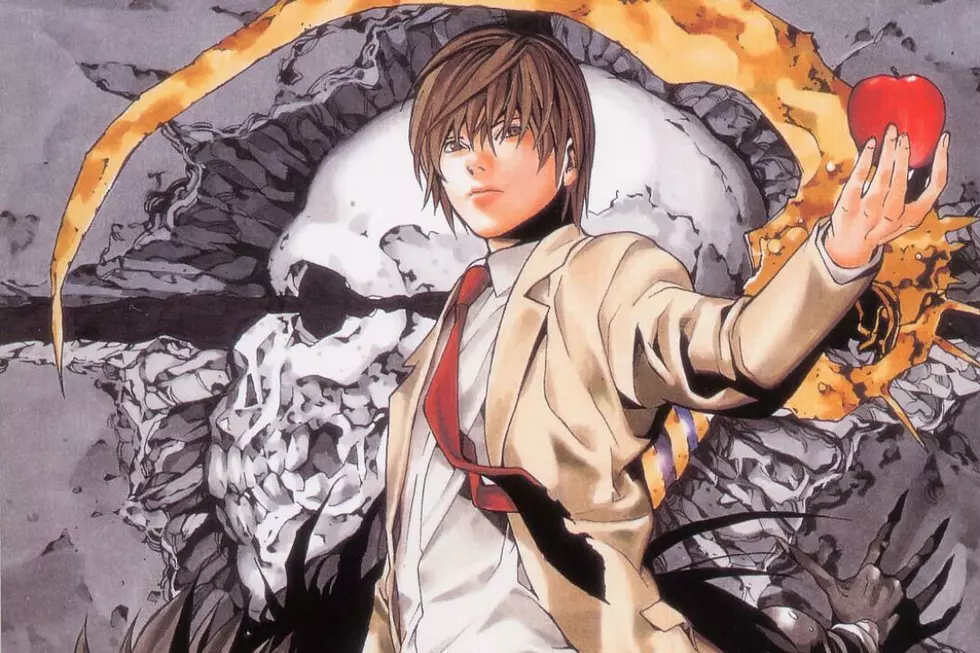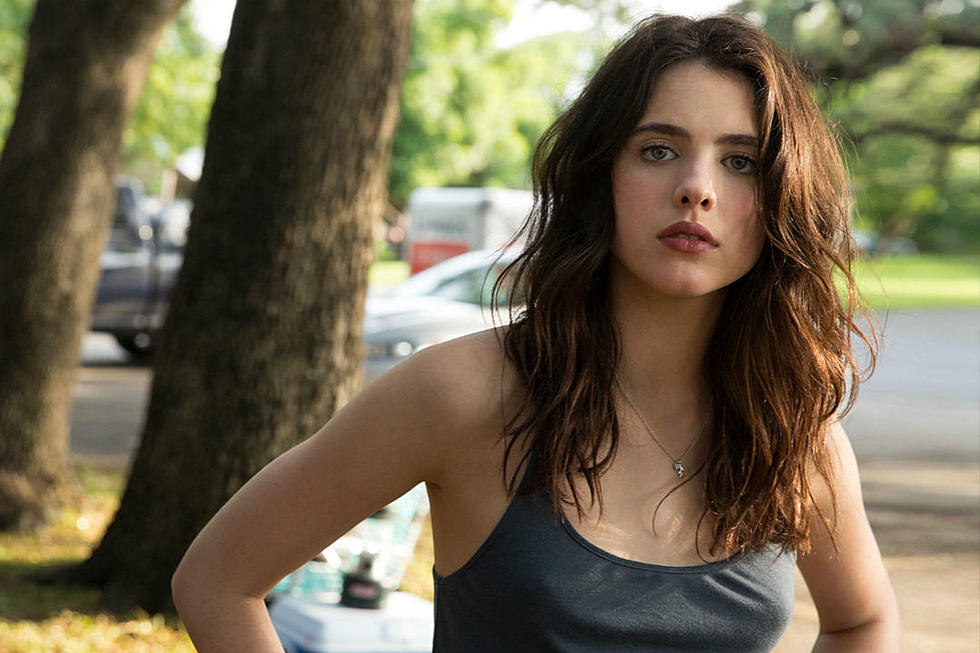
Whatever I’m Working On Is The Best Thing I’ve Done: An Interview With ‘Death Note’ Artist Takeshi Obata
Takeshi Obata is an icon. His work on the horror manga phenomenon Death Note, with writer Tsugumi Ohba, defined horror for a generation of comic fans. The manga Hikaru no Go, with Yumi Hotta, spurred the ancient board game Go to sudden contemporary popularity in 1998. Another Ohba collaboration, Bakuman -- a manga about the creation of manga -- has over 15 million copies in circulation. Obata also illustrated the manga adaptation of All You Need is Kill, a military science fiction light novel by Hiroshi Sakurazaka that was recently adapted for the screen as Edge of Tomorrow.
And Obata's art is gorgeous. He handles Gothic triptychs and domestic scenes alike with incredible skill, bringing sociopaths, pop singers and teen artists to vibrant life. I keep copies of Death Note and Bakuman on my shelf of manga for "people who think they don’t like manga," because his work transcends the boundaries of fandom. He is a master, and he isn't even close to being done.
ComicsAlliance was thrilled to have the chance to speak with him at New York Comic Con 2014 about his work, his influences, and international success.
ComicsAlliance: How did you develop your style as an artist?
Takeshi Obata: I’d always liked drawing and art since I was a kid. I’d draw and draw. For me, drawing is work. I keep my nose to the ground and draw all the time. For me, it’s not exactly exercise — but it’s akin to that. Every day. I've structured my life to be able to draw more, and that’s how my style developed. Also, taking inspiration from my favorite writers and artists and basing my own work on things I liked from them. I’d say that’s how I built my style, as it were.
CA: Your work — Death Note and Bakuman especially, but also Hikaru no Go and All You Need is Kill — have achieved tremendous international success. What has that been like? Has it ever been overwhelming?
TO: I don’t personally think of myself as having become a global success because I’m so busy every day, filling deadlines for weekly serializations. The fact that I've been able to come to New York and meet fans has been really great. It’s so fun to meet fans and learn how enthusiastic they are for this work I've done. That definitely resonates with me, as far as success.
CA: Have you noticed any major differences between the US and Japanese comic industries, or US and Japanese comic fans?
TO: There isn't a huge difference between the fans. They’re all incredibly nice and sincere, and I’m just so honored they like my work.
CA: All You Need Is Kill was recently adapted into Edge of Tomorrow, a major Hollywood movie. What was it like to work on the manga adaptation?
TO: I thought the movie and the novel were great. I’m so excited I get to work on a big project like this, and that I get to do the manga for it. That’s been really great. I think each medium has its own merits.
CA: Everything you've done has been incredibly different in terms of subject matter. Death Note is Gothic horror, All You Need is Kill is military science fiction, Bakuman is slice of life. Where do these ideas come from? What’s in the future?
TO: Mostly, it's based on writing I get, which inspires me. The way these things get developed — it’s things I’m personally interested in, coinciding with the work I’m given. I’m also influenced by the media I've consumed — books, movies, other manga. I’m inspired by the original, and it matches something I've been inspired by, and we go from there.
CA: Do you have any favorite creators, in comics, movies or otherwise?
TO: There’s so many. Manga Michi, by Fujio Fujiko of Doraemon fame is one.
CA: What legacy do you hope your work leaves?
TO: I’m just happy if people enjoy what I draw.
CA: What do you feel is the best work you've ever done?
TO: Whatever I’m working on at the moment is the best thing I've ever done. If I’m not working on something, it’s whatever I work on next.
CA: Is there anything you especially love or hate to draw?
TO: I’m really bad at drawing female characters. It’s difficult to capture their expression because I don’t understand them! Making them pretty and cute is the most difficult thing.
More From ComicsAlliance

![All The NYCC 2016 Comic Toy and Collectible Exclusives: What’s There and Where to Get It [NYCC 2016]](http://townsquare.media/site/622/files/2016/09/nyccxcusiv.jpg?w=980&q=75)
![Takeshi Obata Offers Sweeping Gothic Beauty In ‘Blanc et Noir’ [Review]](http://townsquare.media/site/622/files/2016/04/blanc-et-noir-feat.jpg?w=980&q=75)






